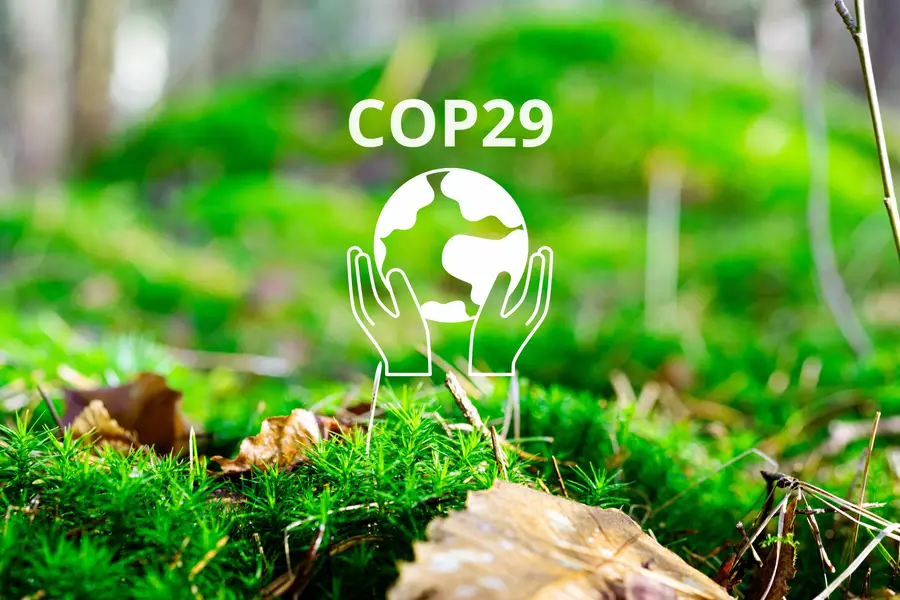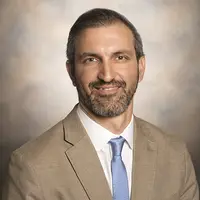Insights
COP29: No Time to Waste

A sense of urgency sits below the surface of the upcoming Conference of the Parties to the United Nations Framework Convention on Climate Change (COP29), set for Nov. 11-22 in the Republic of Azerbaijan. Last year was the hottest on record and 2024 is shaping up to be even hotter. Extreme weather events are already causing extensive and unexpected mortality, morbidity, and property damage across the world, and it appears increasingly unlikely that we’ll meet the goal of limiting the planet’s warming to 1.5°C above pre-industrial levels.
Despite the evident threats, greenhouse gas (GHG) emissions reached a record in 2023, and a new UN report suggests we will reach 3.1°C by the end of the century if we don’t quickly change course. The share of global energy produced by renewable sources is increasing but it’s not happening fast enough to prevent the harmful effects of climate change. Fossil fuels quite literally continue to fuel the economy, underscoring the critical need to advance targeted actions and incentives that can effectively push the global transition to decarbonization.
Each year, COP provides a unique opportunity for countries around the world to unite under common goals for the common good. As the timeframe narrows for phasing out fossil fuels and quickly adapting to the changing climate, the importance of COP29 rises.
Can COP29 Meet the Challenge?
COPs have typically been slow to make progress and when they do, the approved actions are often delayed by the need to work out supporting agreements and details. Some climate specialists are skeptical that COP29 will accomplish much, given that the event is again being hosted by a petroleum state and many countries are holding elections and could see leadership changes. Although high hopes are already being directed toward COP30 in Brazil, we can’t afford to sit this one out. Action is needed at COP29.
We are seeing some indications that Azerbaijan is willing to build on proposals and topics brought forward in previous years. As the unofficial “finance COP,” this year’s convening will attempt to tackle a key and perennially contentious issue: funding the many mechanisms for advancing climate mitigation and adaptation activities. Problems persist around the availability of funding, streamlined access to flexible funds, and the cost of borrowing, which is often significantly higher for the countries that need it the most.
Climate Finance at the Forefront of COP29
COP29 needs to make significant progress on climate finance, as countries are scheduled to submit their Nationally Determined Contributions (NDCs)—detailed plans to cut greenhouse gas emissions to limit warming to well below 2°C—to the UN Framework Convention on Climate Change (UNFCCC) in February 2025. If we can make progress on aligning the NDCs with financing, we can focus on how to best implement action at COP30. If we don’t, then we’ll continue to fall farther behind in our goal to curb global warming.
As UN Climate Change Executive Secretary Simon Stiell astutely observed: “COP29 must be the stand-and-deliver COP, recognizing that climate finance is core business to save the global economy and billions of lives and livelihoods from rampaging climate impacts.”
Private Sector Collaboration for Swift Climate Action
Although agreements made at COP don’t have enforcement authority, they can catalyze nations to come together around commitments that serve the greater good. Incentivized by global ambitions, private sector actors can also use COP as a forum to make and share ambitious commitments to green their supply chains through incorporating renewable energy or nature-based solutions.
Private sector finance plays a critical role in global climate action, and while investments in mitigation and resilience are expanding, they aren’t yet at the levels needed to effect significant change. Profit models don’t always align with climate adaptation and resilience activities. They require the public sector to pass regulations that make carbon emissions more expensive or de-risk climate solutions to make those investments more attractive.
Turning Known Solutions into Climate Action
As we approach COP29, it’s vital to remember that we already have affordable solutions to many of our climate-related challenges. It’s time to begin implementing them on a larger scale, recognizing the multiple benefits that can be derived from increasing carbon sequestration and mitigating emissions. For example, we know how to simultaneously reduce emissions, increase carbon sequestration, and promote resilience in forestry, food, and agriculture, supported by strong data over decades of study. Yet only a very small portion of climate finance is currently directed towards nature-based solutions.
We also know that some of the biggest benefits of methane mitigation and renewable energy adoption come from improving air quality and the associated advantages of clean air for human health. These are no-regrets solutions that can be implemented now. We also need to keep up the momentum around food and agriculture and health, topics which took nearly three decades to be featured prominently in the COP agenda and discussions.
Navigating an Uncertain Future Requires Bold Action
The COP convenings offer a unique forum that brings together people across the world, fosters debate, aligns different perspectives among countries, and promotes collaboration around effective climate action. This global dialogue builds essential social capital among participants, increasing accountability to each other and empowering them to advocate for progress within their home countries.
At COP29, maintaining motivation and accountability will be essential—not only to drive progress in Baku but to embrace this moment as one of our best chances to refocus and act on the urgency of climate change.
Learn more about RTI’s Events at COP29.
Learn more about RTI’s Center for Climate Solutions.
Disclaimer: This piece was written by Aleisha Khan (Senior Climate Advisor) and Daniel Lapidus (Director of Sustainable Agriculture and Food Systems and RTI Climate Liaison) to share perspectives on a topic of interest. Expression of opinions within are those of the author or authors.

